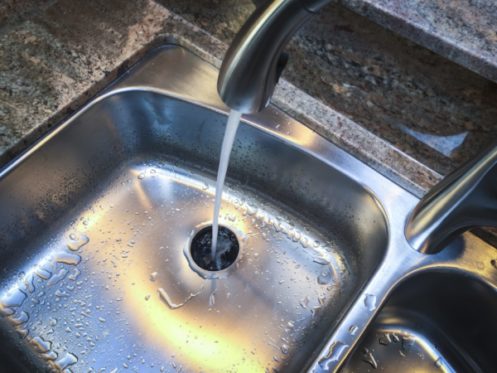The kitchen is arguably the most important room in a home, and when it comes to problems, a leaky kitchen faucet is one of the worst. From unsightly stains on your countertop to an increasing water bill from constantly running water, there are many reasons why leaking kitchen faucets need immediate attention. Keep reading to learn more about the causes of leaky faucets and how to fix them.
Causes of a Kitchen Leaky Faucet
If your kitchen faucet is leaking, you may be wondering what is causing the leak. There are several reasons why your faucet is leaking. Checking out each of the following can help you determine the cause of the leak.
1. Improper Installation
Most leaks are due to poor installation and not just a poorly designed faucet. You can fix a poorly designed faucet, but the problem will reappear when the water valve starts to leak again. The only way to avoid a leaking water valve is to hire an experienced plumber to install your new faucet.
2. Damaged Parts
A damaged faucet can cause a leaky faucet, but generally, the issue is due to the valve itself. The most common types of leaks are by the handle and stem, needing to be replaced. Other types of problems include cracked screens, bent spouts, and worn parts.
3. Water Damage
A leaking kitchen faucet can be caused by large-scale water damage. It often happens when a pipe breaks in the basement or leaks in the hot water tank. Water damage can also occur from an overfilled sink, flooded floor, and even during pipe installation.
4. Age
All faucet parts become worn and damaged over time. It includes the faucet body and handles, the washer, the washer seat, joint O rings, the hose, and the water valve. If you have an older kitchen faucet that is leaking, it just needs an expert plumber to replace worn parts.
5. Bad Maintenance
Ensuring your kitchen faucet is well maintained will ensure it never leaks again. Ensure your faucet is clean and free of debris and be careful when removing the washer to prevent leaks.
6. Water Temperature
If the water from your kitchen taps remains hot, steam can form and damage internal seals. It will cause leaks after the faucet cools or cause the handle to become loose. If you use hot water for long periods, be sure to turn off your taps or let them run until all the steams have been released.
Steps on How to Fix a Leaky Kitchen Faucet
If you need to fix a leaky kitchen faucet, the following steps will help you do so.
1. Shut Off the Water Supply
The first step to fixing any leaky kitchen faucet is to turn off the water supply. To do this, you must shut off the valve under your sink or behind the refrigerator if you do not have one. Ask a professional plumber or check your owner’s manual if you are unsure of where it is.
2. Take Apart the Faucet
The next step is to take the faucet apart and clean everything out. There are many parts to a faucet and cleaning them will prevent future leaks. To clean the stem, the stem washer, check valve, aerator, handle, and the faucet body. Be careful not to damage any of these parts, or they will be useless.
3. Replace Damaged Parts
If you have determined that only a part of the kitchen faucet has been damaged, you need to replace it. If your faucet handle is loose, then you need a new handle. If the item is damaged and leaks, you will need to replace the stem. If you do not want to purchase replacement parts, then call a professional plumber immediately and tell them exactly what part needs to be replaced.
4. Install a New Faucet
Once everything is cleaned out, it is time to replace the parts. You will need the needed replacement parts and a faucet wrench or pliers to tighten everything and replace it after completing your job. If you are going to install your new faucet, be sure that you know exactly how to install it and be safe during this process. If you do not, there are several risks that could result in damage.
5. Turn the Water Back On
Once you have completed the job and everything is working properly, you can turn the water back on. Be sure to test it before turning your water back on and ensure it is working as it should be.
Types of Kitchen Faucets
There are many types of kitchen faucets available and it is important to know which type of faucet you have in your home before you make repairs.
1. Plastic Faucet
These faucets are very sturdy but can be damaged by freezing. They are cheap and come in a variety of colors and designs. They are affordable, easy to use, and do not require much maintenance. They can be installed anywhere in your home because they are lightweight and do not require much space, but they do not come with spray functions or pull-out spouts.
2. Ceramic Faucet
Ceramic faucets are more durable than plastic faucets. It is because they are made from ceramic plates. Ceramic faucets have a body design that will fit in any sink and work with most types of spouts. The only downside to ceramic faucets is that they are a bit pricier than plastic ones and do not come in as many colors.
3. Valve Faucet
A valve faucet resembles an on/off switch but can turn off the water too. This faucet is the most common in homes today because they are easy to use and repair. The only downside is that they are very inexpensive compared to other types of faucets.
4. Electronic Faucet
These faucets have a motion sensor that allows you to turn them on by waving your hand under the spout. It is a very convenient feature but can be pricey, so it is not found in every home yet!
5. Pull Out Faucet
It is one of the older types of faucets, and they require a separate spout that you pull out to fill your sink. They are more expensive than other types but can save a lot of space in your kitchen.
How to Protect Your Kitchen Faucet
There are several ways to protect your kitchen faucet. These include:
1. Maintain Your Faucet
Make sure to clean your kitchen faucet regularly to prevent build-up or damage. To clean your faucet, you will need a vinegar solution, baking soda, a pipe cleaner, a toothpick, and a sponge. It is best to turn off the water valve under your sink and ensure the knobs are in the off position.
2. Tighten the Spout if it Becomes Loose
Over time, the spout can become loose and sometimes leak. It happens because there is no seal to keep it from blowing off or lifting because of water pressure. To fix this, you need to tighten your spout with a wrench and ensure it has a good seal when you are done. If this does not work, you may need to replace the faucet.
3. Repair the Faucet if You Notice That It Is Leaking
Leaking is a sign that there is a problem with your faucet. Sometimes all it takes to fix the issue is to tighten everything. If not, you may need to replace a few parts or even the entire faucet. Either way, you need to call a professional plumber to do the job right.
4. Wrap Pipes With Insulation if They Are Exposed to Cold Weather
Freezing water can cause damage to your faucet and even your handles. When you live in an area prone to freezing conditions, ensure that your faucets are installed properly and wrapped with pipe insulation.
Contact Cal’s Plumbing in Tucson, AZ when you require service for a leaky faucet. We will also be happy to assist you with any of your household plumbing needs and provide information on how to maintain your home. We also provide tankless water heaters and water treatment solutions.





